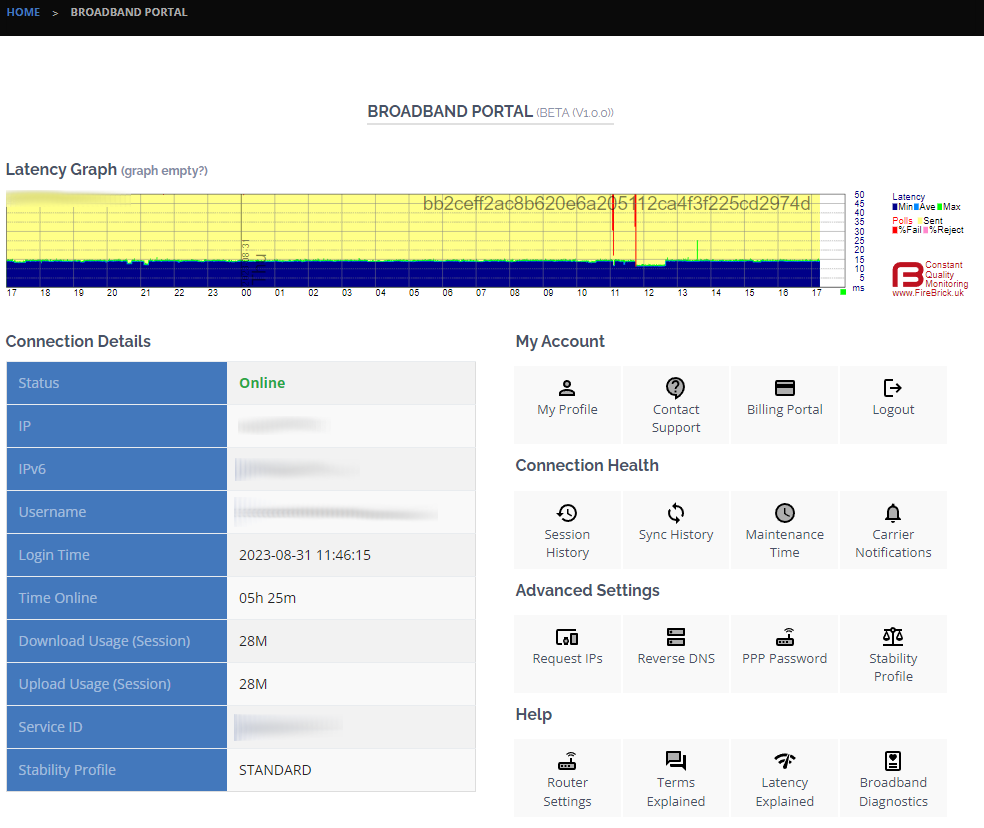Our customers have access to a broadband portal to perform various tasks. Currently this service is in beta and whilst any broadband customer can request access to it, not everyone has it by default. If you'd like to gain access, please contact support and we'll arrange this for you.
What can I do in the portal?
Users can look at various 'health' stats related to their internet connection. Our aim is to be as transparent as possible and to provide customers with all the useful tools we can.

For latency monitoring (ICMP checks), we utilise the Firebrick platform which is able to ping endpoints every second and graph this. The graph you see above shows ICMP latency from our network to a test broadband service. This is very useful for identifying faults with a service as it shows packet loss (red drips), min, max, average latency and over what time period these metrics occurred.
You can also see your IPv4 and IPv6 details on the home page along with other useful information.
Other useful features include the ability to view session history, sync history and carrier maintenance notifications which may be affecting your service.
Advanced Features
For more advanced customers, you can set reverse DNS on your IP addresses (currently this is only available on IPv4) though if you raise a support request with us, we'd be happy to set reverse DNS for your on your IPv6 subnet or delegate this to your own DNS server. Additionally, you can change the PPP password for your connection, set the stability profile for your line (as defined with the carrier), choosing from either 'Standard, Stable or Super Stable'. These settings increase or decrease stability at the expense of latency and throughput. For most customers, leaving this at 'STANDARD' as the best option as these settings tend to be most useful on long lines that have stability issues.
Finally, you're also able to run carrier broadband diagnostics yourself which will initiate a diagnostics test within the carriers systems and retrieve the result at a later time (usually around 2-5 minutes). If you're having intermittent issues and want to capture these in a diagnostics check, then it can be useful to run these periodically and not have to wait for our team to do this for you.
